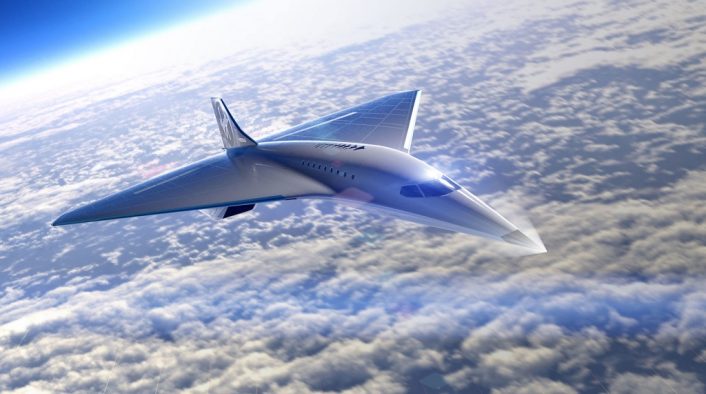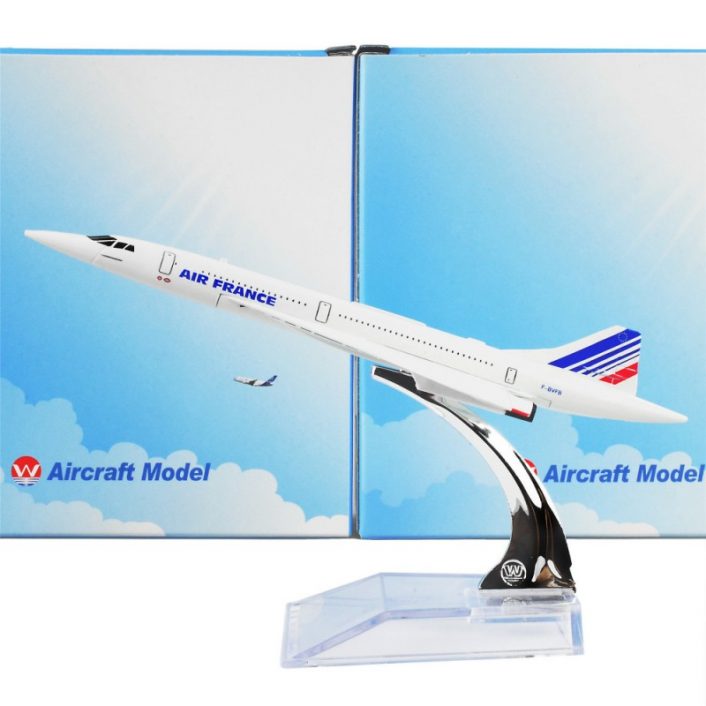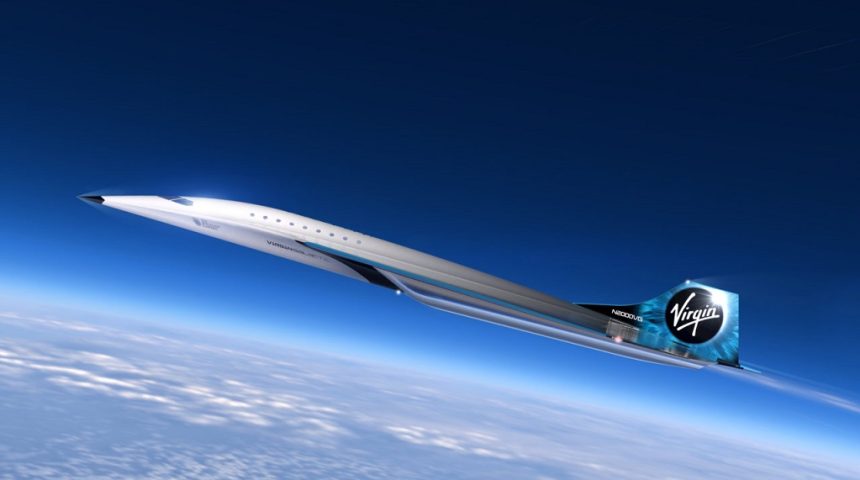The aircraft, developed in cooperation with NASA, is set to become the first supersonic airliner since the retirement of the Concorde.
On August 3, 2020, Virgin Galactic unveiled a concept for a new civilian high-speed aircraft, following the completion of a Mission Concept Review (MCR) and authorization from the Federal Aviation Administration’s (FAA) Center for Emerging Concepts and Innovation.
The aircraft, which doesn’t have an official name yet, is said to be capable of continuous Mach 3 flight at an altitude above 60,000 feet. The delta wing aircraft is reminiscent of the British-French Concorde, with a streamlined profile and underwing engine nacelles, but probably smaller as the company stated that it will have a capacity for nine to 19 people (depending on the cabin configuration), while the Concorde had seating configurations for 92 to 128 passengers.
According to Virgin Galactic, with the MCR the team behind the project confirmed, after extensive research and analysis work, that the concept can meet the design goals and proceed to define the aircraft’s systems and materials, while addressing thermal management, maintenance, noise, emissions and economic fleet sustainment.
The MCR also included NASA representatives, after the company signed back in May 2020 a Space Act Agreement with the agency to collaborate “in order to advance the United States’ efforts to produce technically feasible, high Mach vehicles for potential civil applications”.
NASA have years of experience with supersonic aircraft technology and is currently working in partnership with Lockheed Martin’s Skunk Works division to develop the X-59 QueSST (Quiet Supersonic Technology), an aircraft designed to generate a quieter sonic boom which should be within acceptable noise levels to help the FAA to lift the ban on commercial supersonic travel over land imposed in 1973. Data gathered from this program could probably find its way into the design of Virgin’s aircraft.

Last year the agency proposed new rules for supersonic aircraft and also indicated it could revisit the ban if technological changes mitigating the noise impact of supersonic flight should arise. The X-59, which should fly for the first time next year, is being designed to cruise at 55,000ft and Mach 1.4 according to NASA, with a sonic boom of less than 75 perceived dB on the ground, about a third less than the Concorde, which was reported around 100-110 dB.
Additionally, Virgin Galactic signed a Memorandum of Understanding with Rolls-Royce to collaborate in designing and developing the engine that will be used for this project. The cooperation with Rolls-Royce, the same manufacturer of the Concorde’s Olympus engines, is also focused to include in the engine’s design the use of state-of-the-art sustainable aviation fuel.
The Concorde, together with the Soviet Tu-144, was a technological wonder for the era. Even if it was designed in the 1960s, the Concorde already featured carbon-fiber brakes and fly-by-wire controls. The aircraft, however, suffered from some drawbacks like the high fuel consumption of approximately 6,700 gallons per hour, limited range that was just enough to cross the Atlantic Ocean, and the noise generated by the sonic boom, which restricted the aircraft to fly supersonically only over the water. The 2000 crash in Paris may have definitively marked the time to move away from supersonic airliners, which led to the Concorde being retired in 2003.
Virgin said that their design philosophy is focused to make high speed travel practical, sustainable, safe, and reliable, with the new aircraft being able to operate like a standard airliner from existing airports without the need for special infrastructure. The Mach 3 aircraft is just one of the projects of Virgin Galactic, as the company is also working on starting commercial sub-orbital flights from Spaceport America (New Mexico) with their reusable SpaceShipTwo spaceflight system.
While Virgin works on a new supersonic civilian aircraft, on the military side it’s not a secret that Lockheed is working on new unmanned aircraft concept, an SR-71 follow-on, colloquially referred to in most media as the “SR-72” that should have global range, be able to fly in excess of Mach 6, be low-observable and potentially have strike capability. The new hypersonic UAV concept mainly intended for ISR (intelligence, surveillance and reconnaissance) missions was announced in 2013. In November 2018, Lockheed Martin stated that a prototype of the SR-72 was scheduled to fly by 2025.










